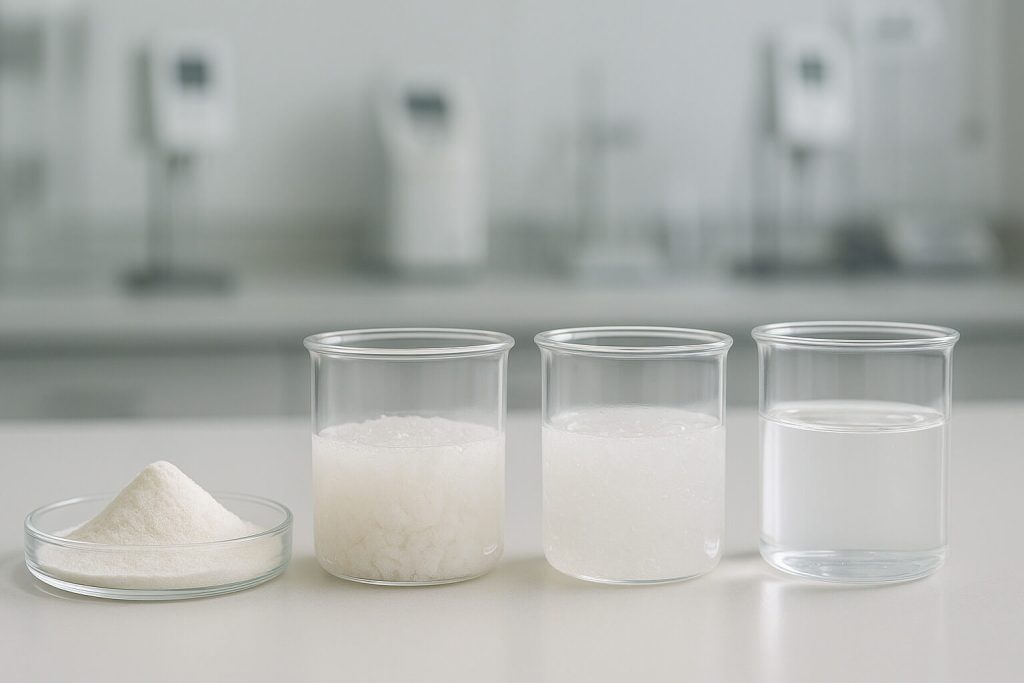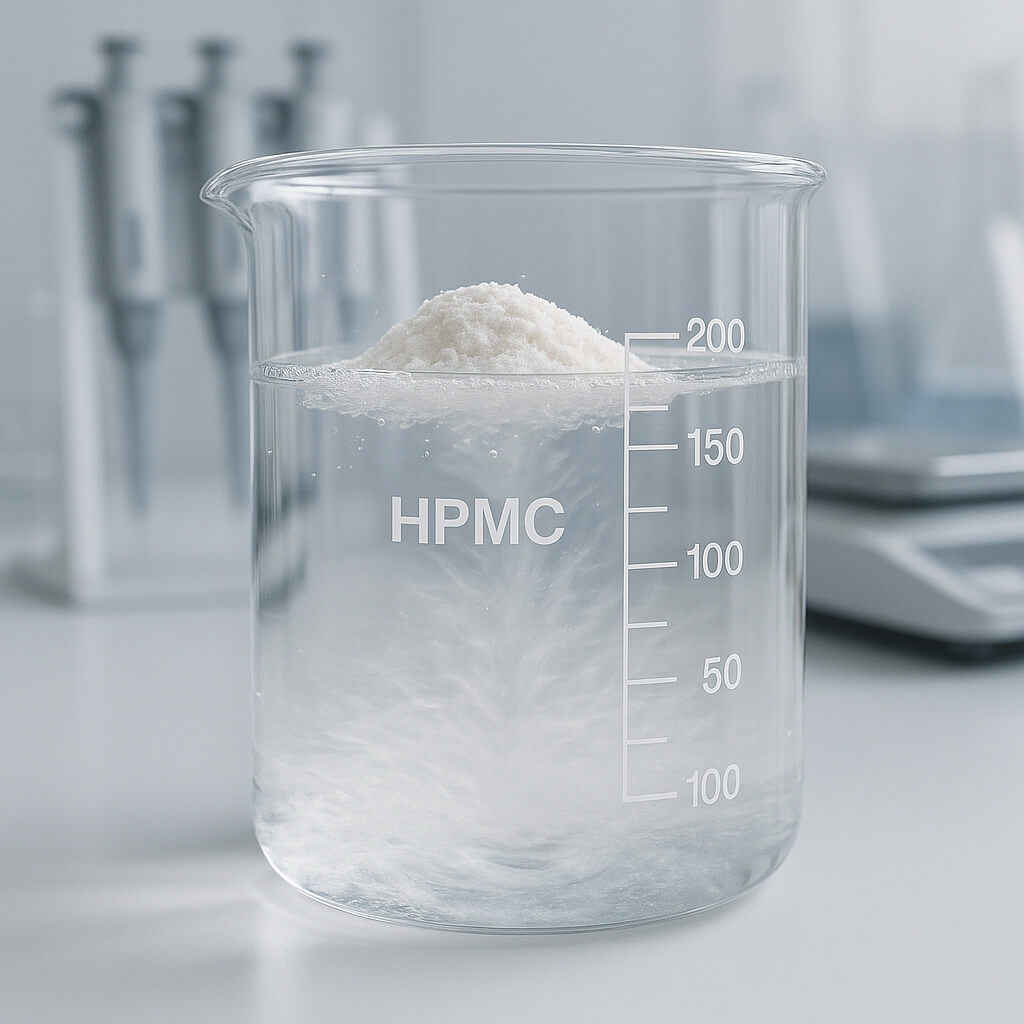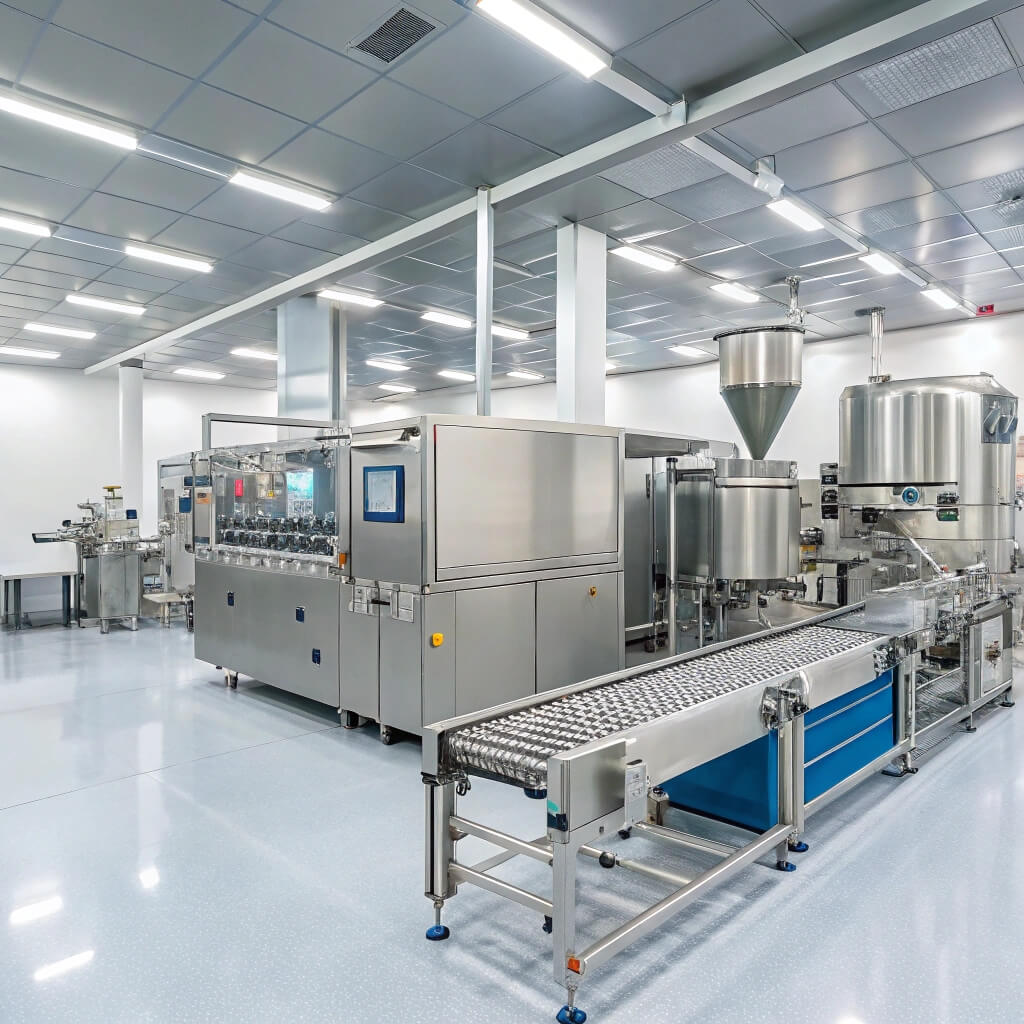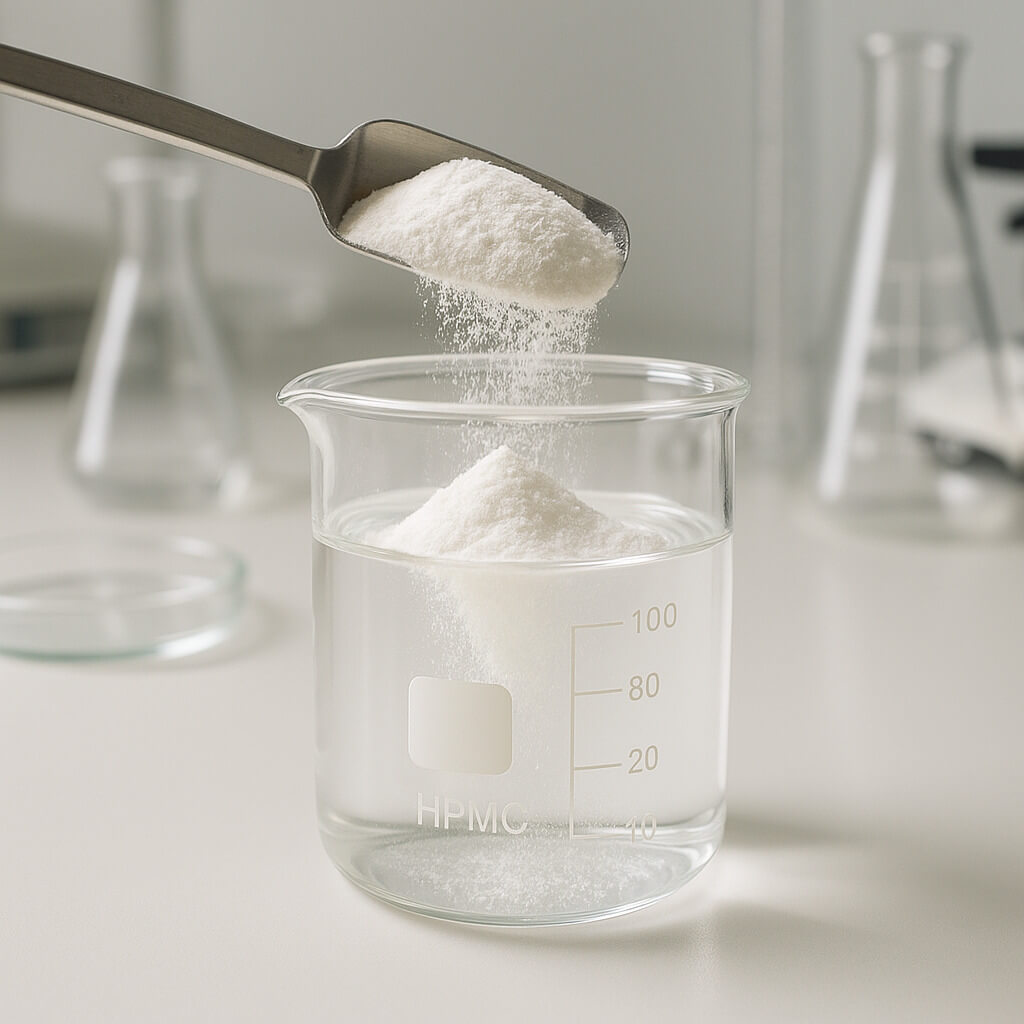Hydroxypropyl Methylcellulose (HPMC) is a highly versatile and important compound used in a range of industries. The physicochemical properties of HPMC—such as its solubility, viscosity, and molecular structure—are critical to its wide applications in pharmaceuticals, food, construction, and cosmetics. Understanding these properties is essential for optimizing HPMC’s performance in different formulations. In this article, we’ll dive deep into the key physicochemical properties of HPMC, explaining how they impact its industrial applications and provide a clear understanding of why these characteristics are vital to achieving desired results.

1. What are the Physicochemical Properties of HPMC?
HPMC, a derivative of cellulose, is widely used for its unique physicochemical properties, which include its solubility, viscosity, and thermal stability. But here’s the kicker… its properties can be fine-tuned to meet the specific requirements of various industries. The solubility of HPMC is one of its most important characteristics. It is highly soluble in both cold and hot water, depending on the degree of substitution, making it a useful agent in pharmaceutical suspensions, food formulations, and even construction materials like tile adhesives.
Viscosity is another crucial property of HPMC. It can be adjusted to create solutions with varying thickness, which is particularly useful in applications where fluid flow control is important. For example, in pharmaceutical tablets, the viscosity helps in controlling the release rate of the drug. Similarly, in construction, HPMC’s viscosity is used to improve the workability and adhesion of mortar and adhesives.
Thermal stability is another feature that makes HPMC highly desirable in industrial applications. HPMC can maintain its properties over a wide range of temperatures, which is particularly important in the food and pharmaceutical industries where temperature variations are common. This stability ensures that the compound remains effective in various environments and conditions.
| Proprietà | Significato | Applicazioni chiave |
|---|---|---|
| Solubilità | High solubility in water | Pharmaceuticals, Food, Cosmetics |
| Viscosità | Adjustable for varying thickness | Pharmaceuticals, Construction |
| Stabilità termica | Maintains properties under varying temperatures | Food, Pharma, Construction |
2. How Does the Molecular Structure of HPMC Affect Its Properties?
The molecular structure of HPMC directly influences its physicochemical properties and, consequently, its functionality in different applications. Ready for the good part? HPMC is derived from cellulose, but it has been chemically modified with hydroxypropyl and methyl groups. These modifications make HPMC more soluble in water and enhance its performance in various conditions.
The degree of substitution (DS)—which refers to the number of hydroxyl groups that are replaced by hydroxypropyl and methyl groups—plays a significant role in determining HPMC’s solubility and viscosity. A higher DS leads to a more soluble product and a higher viscosity, which can be essential for achieving the desired consistency in pharmaceutical, food, and construction applications.
In pharmaceuticals, the molecular structure allows HPMC to be used as a binder in tablet formulations or as a controlled-release agent. The methyl groups enhance the compound’s solubility, making it easier for the body to absorb the active ingredients. The hydroxypropyl groups, on the other hand, improve the compound’s ability to retain water, which is crucial for the stability of the final product.
In construction, the molecular structure of HPMC is responsible for its ability to improve the water retention and adhesion of mortars, tile adhesives, and plasters. The presence of methyl and hydroxypropyl groups ensures that the HPMC can form a stable, cohesive mixture that remains workable during application.
| Modification | Impact on Properties | Vantaggi dell'applicazione |
|---|---|---|
| Hydroxypropyl | Improves water retention | Enhances stability and texture |
| Methyl | Increases solubility | Improved absorption in pharmaceuticals |
| Grado di sostituzione | Higher DS = higher viscosity | Improved formulation control in various industries |
3. Why are HPMC’s Solubility and Hydrophilic Properties Important?
The solubility and hydrophilic nature of HPMC make it an ideal compound for various industrial uses, especially in pharmaceuticals and food. But here’s the kicker… these properties allow HPMC to dissolve in water at different temperatures, giving it versatility in diverse formulations.
In pharmaceuticals, the solubility of HPMC is essential for its role in suspensions and controlled-release tablets. Since HPMC can dissolve in both cold and hot water, it’s an excellent choice for products that require precise control over drug release. By adjusting the concentration of HPMC, pharmaceutical manufacturers can modify the rate at which the active ingredients dissolve and are released into the body, ensuring that the medicine is delivered in the correct dosage over time.
For food applications, HPMC’s hydrophilic properties make it an ideal stabilizer and emulsifier. In dairy and plant-based foods, HPMC helps improve texture and prevent the separation of ingredients. It also acts as a thickening agent in sauces, dressings, and soups, enhancing the product’s consistency and mouthfeel.
In cosmetics, HPMC is used for its ability to retain moisture and improve the texture of products like lotions, shampoos, and creams. The hydrophilic nature of HPMC helps to create smooth, stable emulsions, making it a key ingredient in personal care formulations.
| Applicazione | Function of Solubility and Hydrophilic Properties | Product Performance |
|---|---|---|
| Prodotti farmaceutici | Controlled release, suspensions | Precise drug release, stability |
| Cibo | Stabilizer, emulsifier | Improved texture, consistency |
| Cosmetici | Moisture retention, texture enhancement | Smooth, stable emulsions |
4. How Does HPMC React to pH and Temperature Changes?
HPMC is known for its stability and versatility, but its behavior can vary depending on environmental factors such as pH and temperature. What’s the real story? HPMC’s pH and temperature sensitivity make it particularly valuable in applications where conditions can change during processing or use.
At neutral to alkaline pH levels, HPMC remains stable, making it ideal for use in a variety of pharmaceutical and cosmetic formulations. However, at highly acidic or highly basic pH values, HPMC’s solubility and viscosity can be altered. For example, in pharmaceuticals, adjusting the pH can influence the solubility of HPMC and, by extension, the rate at which active ingredients are released from a tablet or suspension.
Temperature also plays a significant role in HPMC’s performance. As the temperature increases, the viscosity of HPMC solutions tends to decrease. This temperature sensitivity is particularly important in food and pharmaceutical applications where heating or cooling occurs during manufacturing or storage. Manufacturers can use this property to control the flow and consistency of products during production.
So, what does this mean? The ability to control pH and temperature allows manufacturers to optimize HPMC’s properties for specific industrial needs, ensuring consistent product quality and performance.
| Condizione | Impact on HPMC Behavior | Application Impact |
|---|---|---|
| pH (Neutral) | Stable solubility and viscosity | Ideal for pharmaceuticals and food |
| pH (Acidic/Alkaline) | Altered viscosity, solubility | Requires adjustments in formulation |
| Temperatura | Viscosity decreases with heat | Important for food, pharma, and cosmetics |
5. What Role Does HPMC’s Molecular Weight Play in Its Physicochemical Properties?
HPMC’s molecular weight is a key factor in determining its solubility, viscosity, and gel-forming properties. Ready for the good part? The molecular weight of HPMC plays a direct role in its performance across different applications, as it controls the overall behavior of the compound.
A higher molecular weight typically results in higher viscosity and a thicker solution. This is particularly useful in pharmaceutical formulations where a high-viscosity grade of HPMC is needed to control the release of active ingredients. High molecular weight HPMC is also used in thicker gel formulations and to create films for controlled-release tablets.
On the other hand, lower molecular weight HPMC grades are more easily soluble and have lower viscosity, which makes them suitable for applications like suspensions, coatings, and emulsions. In the food industry, lower molecular weight HPMC is often used to improve texture without making the product too thick.
In construction, HPMC’s molecular weight influences its ability to retain water, which is critical for the workability and adhesion of mortars, adhesives, and plasters. Manufacturers can adjust the molecular weight of HPMC to achieve the desired balance of performance and ease of use in various formulations.
| Peso molecolare | Viscosity & Solubility | Typical Uses |
|---|---|---|
| Alto | High viscosity, low solubility | Controlled-release tablets, gels |
| Basso | Low viscosity, high solubility | Suspensions, coatings, emulsions |
6. How Do the Chemical Modifications of HPMC Affect Its Applications?
HPMC is chemically modified to meet specific industrial needs, and these modifications greatly affect its properties and performance. This is where it gets interesting… The degree of substitution, which refers to the number of hydroxyl groups replaced by hydroxypropyl and methyl groups, is a critical factor in determining the performance of HPMC in different applications.
For example, a higher degree of substitution results in better solubility and increased viscosity, making it ideal for use in pharmaceutical tablets, controlled-release systems, and thickening agents for food. Conversely, a lower degree of substitution may be preferred for applications where lower viscosity or faster dissolution is required.
In construction, the degree of substitution influences the water retention and workability of mortars and adhesives. High-substitution HPMC provides enhanced water retention, making it suitable for use in tile adhesives and plaster formulations. Low-substitution HPMC is used when a faster setting time is desired.
The flexibility in modifying HPMC’s chemical structure allows manufacturers to tailor its properties for different industrial needs, improving product performance across a wide range of sectors.
| Grado di sostituzione | Viscosity & Solubility | Applicazione |
|---|---|---|
| Alto | High viscosity, high solubility | Pharmaceuticals, construction |
| Basso | Low viscosity, fast dissolution | Fast-setting adhesives, coatings |
7. What are the Practical Applications of HPMC Based on Its Physicochemical Properties?
HPMC’s physicochemical properties make it ideal for a variety of industrial applications. But here’s the kicker… the versatility of HPMC allows it to be used in pharmaceuticals, food, construction, and cosmetics, each with its own specific requirements.
In pharmaceuticals, HPMC is used as a binder in tablets, a suspending agent in liquid formulations, and a controlled-release agent. Its ability to control the dissolution rate of active ingredients ensures that drugs are released at the desired rate, improving therapeutic outcomes.
In the food industry, HPMC’s solubility and viscosity properties are used to stabilize emulsions, improve texture, and thicken products. It is commonly used in dairy products, plant-based foods, and sauces to maintain consistency and prevent separation.
In construction, HPMC improves the workability, adhesion, and water retention of mortars, adhesives, and plasters. Its ability to retain water ensures that these products remain workable during application, while its high viscosity improves the bonding strength.
In cosmetics, HPMC’s ability to retain moisture and create smooth, stable emulsions makes it a key ingredient in lotions, shampoos, and creams. Its thickening properties enhance the texture and feel of personal care products.
| Industria | Application of HPMC Properties | Product Performance |
|---|---|---|
| Prodotti farmaceutici | Controlled release, suspensions, binding | Consistent drug release, stability |
| Cibo | Texture, stabilization, emulsification | Prevents separation, improves texture |
| Costruzione | Ritenzione idrica, aderenza, lavorabilità | Easier application, better bonding |
| Cosmetici | Moisture retention, emulsification | Improved texture, smooth application |
8. How Can HPMC’s Physicochemical Properties be Optimized for Different Industries?
Optimizing HPMC’s physicochemical properties allows manufacturers to tailor its performance to meet specific industry requirements. This is where it gets interesting… Adjusting the degree of substitution, molecular weight, and concentration of HPMC can significantly impact its behavior in different applications.
In the pharmaceutical industry, manufacturers can optimize the viscosity of HPMC to achieve the desired controlled-release characteristics for tablets or suspensions. For example, adjusting the molecular weight allows for faster or slower drug release, which is crucial for personalized medicine.
In the food industry, optimizing the solubility and viscosity of HPMC ensures that it functions as an effective emulsifier and stabilizer. By modifying these properties, manufacturers can enhance the texture of plant-based foods or improve the stability of dairy products.
In construction, optimizing the water retention and viscosity of HPMC helps improve the performance of mortars, adhesives, and plasters. Adjusting these properties can also allow for faster or slower setting times, depending on the specific needs of the application.
| Industria | Metodi di ottimizzazione | Desired Outcome |
|---|---|---|
| Prodotti farmaceutici | Adjust molecular weight, viscosity | Controlled drug release, faster dissolution |
| Cibo | Modify solubility, viscosity | Improved texture, stability |
| Costruzione | Optimize viscosity, water retention | Better adhesion, adjustable setting time |
9. What are the Challenges and Limitations of Using HPMC?
While HPMC offers numerous advantages, there are challenges and limitations to consider when using it in industrial applications. One challenge is the variability in the performance of HPMC depending on its grade and the degree of substitution. Different formulations may require specific grades of HPMC to achieve the desired properties, which can complicate the sourcing process.
Another limitation is the potential for interactions with other ingredients in formulations, particularly in food and pharmaceuticals. For example, HPMC can interact with certain salts or other excipients, affecting the stability or dissolution rate of a formulation.
What’s the real story? To overcome these challenges, manufacturers must carefully select the appropriate grade of HPMC and conduct thorough testing to ensure that it meets the specific needs of the application.
| Sfida | Impatto sulle prestazioni | Soluzione |
|---|---|---|
| Grade variability | Inconsistent performance | Careful selection and testing |
| Ingredient interactions | Potential instability | Proper formulation and compatibility testing |
10. What Are the Future Trends in HPMC and Its Physicochemical Properties?
The future of HPMC looks promising, with ongoing innovations in its modification and use across industries. As the demand for eco-friendly and sustainable products grows, HPMC’s biodegradability and versatility make it an attractive choice for companies aiming to reduce their environmental footprint.
Emerging trends include the development of customized HPMC formulations with tailored viscosity, solubility, and release profiles. These innovations are likely to expand the use of HPMC in new industries, particularly in personalized medicine and advanced construction materials.
What’s the takeaway? The future of HPMC lies in its ability to adapt to the evolving needs of various industries, offering increasingly specialized and sustainable solutions.
| Tendenza | Potential Impact | Future Applications |
|---|---|---|
| Sustainability | Increased demand for eco-friendly solutions | Growth in green construction and pharmaceuticals |
| Personalizzazione | Tailored formulations for specific needs | Personalized medicine, advanced construction techniques |
Sezione FAQ
Domanda 1: What is HPMC and why are its physicochemical properties important?
HPMC (Hydroxypropyl Methylcellulose) is a cellulose derivative used across various industries. Its physicochemical properties, such as solubility, viscosity, and stability, are important because they determine how it performs in different formulations and applications.
D2: How does HPMC’s molecular structure affect its properties?
The molecular structure of HPMC, which includes hydroxypropyl and methyl groups, affects its solubility, viscosity, and overall behavior in formulations. These modifications make HPMC soluble in water and enhance its performance in different environments.
D3: Why is solubility important for HPMC in pharmaceutical and food applications?
Solubility is crucial for HPMC in pharmaceutical and food applications because it determines how well the compound can dissolve and interact in different environments, which is essential for achieving desired formulations like tablets or food stabilizers.
D4: What role does HPMC’s molecular weight play in its physicochemical properties?
Molecular weight is significant because it directly influences HPMC’s viscosity, solubility, and gel-forming abilities. A higher molecular weight typically results in higher viscosity, which can be critical in applications like controlled-release tablets or adhesives.
D5: How can HPMC’s physicochemical properties be optimized for different industries?
HPMC’s properties can be optimized by adjusting its molecular weight, degree of substitution, and concentration to meet specific needs in industries such as pharmaceuticals, food, and construction, ensuring improved performance and product consistency.




